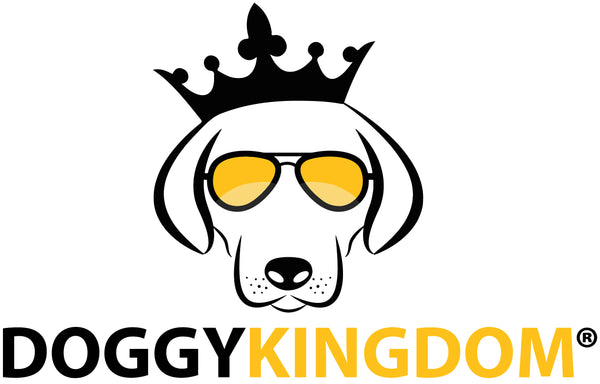Understanding and Handling Clingy Dogs: Tips for a Balanced Bond
Share
Dogs are known for their loyalty and affection, and while many dog owners relish the love and attention from their furry companions, some dogs can exhibit clingy, over-the-top behavior that can be overwhelming and challenging to manage.
Clinginess in dogs is often rooted in their instinctual need for companionship and security, but excessive clinginess can lead to separation anxiety and other behavioral issues.
Let's explore the reasons behind clingy behavior in dogs and provide practical tips on how to deal with it, ensuring a healthy and balanced bond with your four-legged friend.
Understanding Clingy Behavior in Dogs
- Separation Anxiety: Dogs are pack animals, and when they become deeply attached to their human family, they may experience anxiety and distress when left alone. This condition is known as separation anxiety and can manifest through behaviors like excessive whining, destructive chewing, and potty accidents.
- Lack of Socialization: Dogs that haven't been adequately socialized may develop clingy behavior as they lack the confidence to explore the world on their own. Proper socialization during their early stages is crucial to build self-assurance and independence.
- Health Issues: Sometimes, clingy behavior in dogs might be a result of underlying health problems. If your dog suddenly becomes clingy or displays unusual behavior, it's essential to consult with a veterinarian to rule out any medical issues.
Tips to Deal with Clingy Behavior
- Gradual Independence Training: To help your dog become more comfortable with being alone, start with short periods of separation and gradually increase the time. Offer a safe and cozy space for your dog, like a designated area with their favorite toys and bedding.
- Positive Reinforcement: Praise and reward your dog whenever they display independent behavior or remain calm during short periods of separation. Positive reinforcement helps reinforce desired behaviors and encourages them to repeat them.
- Engage in Regular Exercise: Ensure your dog gets ample physical and mental stimulation through regular walks, playtime, and training sessions. A well-exercised dog is likely to be more content and less likely to be clingy.
- Provide Interactive Toys: Interactive toys, treat puzzles, and chew toys can keep your dog entertained and occupied, reducing their need for constant attention from you.
- Establish a Routine: Dogs thrive on predictability, so having a consistent daily routine can help reduce anxiety. Schedule regular feeding times, walks, and play sessions to provide structure to their day.
- Avoid Excessive Reassurance: While it's tempting to comfort a clingy dog, excessive reassurance can reinforce their clingy behavior. Instead, wait for moments of calmness to reward and acknowledge them.
- Practice Short Departures: Gradually get your dog accustomed to your departures by practicing short absences and gradually increasing the time you are away.
- Seek Professional Help: If your dog's clingy behavior persists despite your efforts, consider seeking guidance from a professional dog trainer or animal behaviorist. They can provide personalized advice and techniques to address the specific issues your dog may be facing.
Dealing with a clingy dog requires patience, understanding, and consistent training. By recognizing the reasons behind their clinginess and implementing positive reinforcement techniques, you can help your dog become more independent and confident.
A balanced bond with your canine companion will not only benefit their well-being but also strengthen the loving and fulfilling relationship you share with them.
Every dog is unique, so tailor your approach accordingly, and with time and dedication, you can help your clingy dog thrive as a happy and well-adjusted member of your family.




5 comments
Separation doesn’t seem to be a problem with us. My dog needs constant touching and contact with us to be happy. She gets plenty of exercise and social interaction with other dogs, does not display jealousy or angst when other dogs are present. She is like a shadow, a vampire, constant nearness at times is overwhelming, like I have no private times to myself. She is never naughty, or displays jealousy, but is really reluctant to leave my side at times!She did have a past family that abandoned her at a shelter, when they had a newborn come into the picture. My wife and I are senior people and maybe she thinks we will leave here too? She is very intelligent and picks up on every little thing that happens in the house???
Thanks, Bill
Separation doesn’t seem to be a problem with us. My dog needs constant touching and contact with us to be happy. She gets plenty of exercise and social interaction with other dogs, does not display jealousy or angst when other dogs are present. She is like a shadow, a vampire, constant nearness at times is overwhelming, like I have no private times to myself. She is never naughty, or displays jealousy, but is really reluctant to leave my side at times!She did have a past family that abandoned her at a shelter, when they had a newborn come into the picture. My wife and I are senior people and maybe she thinks we will leave here too? She is very intelligent and picks up on every little thing that happens in the house???
Thanks, Bill
Separation doesn’t seem to be a problem with us. My dog needs constant touching and contact with us to be happy. She gets plenty of exercise and social interaction with other dogs, does not display jealousy or angst when other dogs are present. She is like a shadow, a vampire, constant nearness at times is overwhelming, like I have no private times to myself. She is never naughty, or displays jealousy, but is really reluctant to leave my side at times!She did have a past family that abandoned her at a shelter, when they had a newborn come into the picture. My wife and I are senior people and maybe she thinks we will leave here too? She is very intelligent and picks up on every little thing that happens in the house???
Thanks, Bill
Separation doesn’t seem to be a problem with us. My dog needs constant touching and contact with us to be happy. She gets plenty of exercise and social interaction with other dogs, does not display jealousy or angst when other dogs are present. She is like a shadow, a vampire, constant nearness at times is overwhelming, like I have no private times to myself. She is never naughty, or displays jealousy, but is really reluctant to leave my side at times!She did have a past family that abandoned her at a shelter, when they had a newborn come into the picture. My wife and I are senior people and maybe she thinks we will leave here too? She is very intelligent and picks up on every little thing that happens in the house???
Thanks, Bill
All good suggestions when practiced together. It’s important to note human behavior often has a lot to do with pet clinginess, i.e. the pet owner wants the pet’s attention, and company ‘most’ of the time, but then is unprepared and often unequipped to address the pet’s learned behavior when it’s inconvenient, or unwanted, i.e. when the pet owner leaves home, or is entertaining/hosting at home. Humans often have to be trained to ‘let go of the emotional leash’ they’ve placed on their pet!